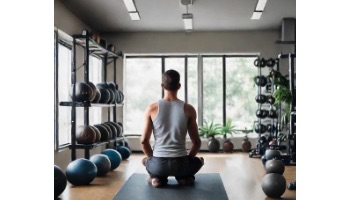 Question: What is the best exercise for getting better at hanging off the side of a cliff? Answer: Hang off the side of a cliff. What is the next best exercise for hanging off the side of a cliff? The answer to that is important because it doesn’t get nearly enough representation in the general fitness scene.
Question: What is the best exercise for getting better at hanging off the side of a cliff? Answer: Hang off the side of a cliff. What is the next best exercise for hanging off the side of a cliff? The answer to that is important because it doesn’t get nearly enough representation in the general fitness scene.
Climbing has slowly worked its way into the mainstream. These days, you don’t even have to live by the mountains. You can go to an indoor climbing gym and get your jollies by hanging upside down from the ceiling like some kind of spider monkey. And like just about every sport, people are eager to know if there are any particular exercises that will make them better. Climbing is a great sport to deconstruct this idea, because it seems like the answers are pretty straightforward. Exercises that mimic hanging and pulling ought to be good. Core strength seems like a must. If you’re familiar with the basics of good climbing, you’ll know that leg strength is important. And it’s all true. And yet, working on all of those things in the gym isn’t going to make you a good climber. How much you squat or how many chin ups you can do is not going to predict how well you can dangle off a mountain because dangling off a mountain is a very specific athletic performance, and that isn’t what conditioning work is for.
There’s No Climbing Conditioning. There’s Conditioning And Then There’s Climbing
Here’s an interesting little tidbit. Research indicates that climbers don’t have stronger grips than non-climbers in an absolute sense. In other words, a climber can’t crush your palm in a handshake any more than the next person. Also, climbers don’t have more grip endurance in a sustained test. That is to say, if you have to squeeze a spring for as long as possible, the climbers can’t hang on any longer than your normal person.1 Now, if you’ve ever done any climbing, that might seem crazy to you, given that your hands and forearms probably started giving out about ten minutes into the experience. The key to the mystery is in the details. It was absolute grip strength and sustained grip endurance that were tested, but those things aren’t what’s important. What helps climbers isn’t how hard they can grip, it’s how hard they can grip compared to how heavy they are. If you’ve got a strong grip and you are relatively light, you’ll be able to hold on better than if you are heavy. Similarly, the endurance that you need isn’t sustained endurance—if you find yourself trying to hang from one spot for as long as possible off the side of a cliff…well, just think about it. It’s the ability to repeatedly grab over a long period of time that matters for climbers.
One might think that you could develop a strength program that takes this information into account and adjusts accordingly. For example, instead of doing a set of ten chin ups straight, which requires a sustained grip, we could have our climber jump up, do a rep, jump back down, jump up again, do another rep, jump back down, and so on and so forth. Or, instead of doing a single heavy deadlift, maybe they do fifty lighter deadlifts in a row, letting go of the bar each time. That would approximate the grip and release pattern in climbing. However, there are two important drawbacks to this. The first is that it starts to get a little cumbersome and convoluted—all that jumping up and down or deadlifting for five minutes straight. The second is one that seems obvious once you say it out loud: if you want to practice the kind of gripping you need climbing then why not just go climb?
What Good Conditioning Is Really For
Does this mean that you shouldn’t do any extra training? No. Conditioning of course helps athletes, but how it helps isn’t what we think. In general, what you want to do when you are conditioning for a sport is create a more robust, more resilient body, period. Strength training, for example, isn’t just about having powerful muscles. The work you do when getting stronger also improves your movement patterns, strengthens soft tissue like tendons, and adds stability. It can also help you learn movement skills, such as how to pivot and swivel properly. All of this makes you more athletic and less prone to injury, no matter what activity you are doing.
Cardiovascular training can be thought of similarly. In the case of climbing, it was noted that participants need to be good at tolerating lactic acid build up and at clearing it from the system.2 General cardiovascular training helps the body become better at both of those things, so it could be useful to maintain a certain baseline of cardiovascular fitness. You do not, however, have to go crazy on this. Running a marathon does not necessarily mean you will climb better. A lot of your body’s ability to handle the stresses of climbing are still going to come from practicing climbing. Again, some general conditioning in order to make the body better overall is what the goal should be.
You Can Condition Yourself In The Wrong Direction
Remember what we said about grip strength? What helps a climber is having a strong grip compared to their body weight. If two people have the same grip strength, the lighter person is going to be comparatively stronger because their hands don’t have to hold as much load. Knowing that, it doesn’t make sense, as an example, to train in a way that drives muscle size and bulk. Climbers want to stay as light as possible, so instead of weight gainer and body building, they should focus on strength and movement proficiency. Generally speaking, that would indicate heavier weights and fewer reps with an emphasis on full body movements. Bottom line, no matter what your sport think about how the end result of your training will impact what you are trying to do.
BONUS: Want to climb and do something for the environment? Check out Climb for Conservation.


